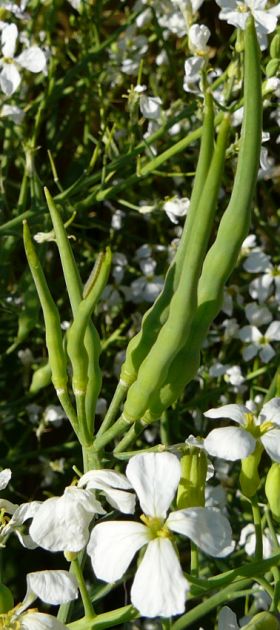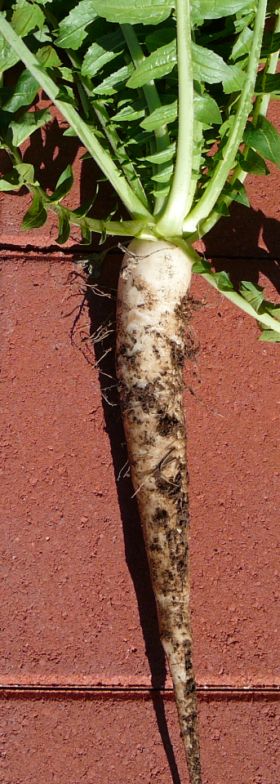
Garden and Plate
The Molecular Biology of Nutrition








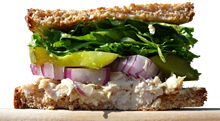

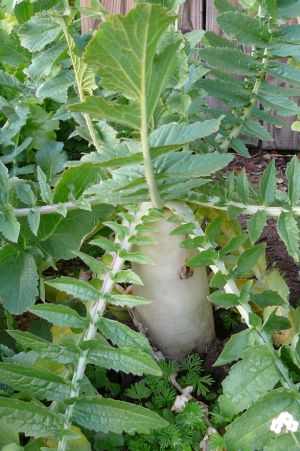
There are many different kinds of plants that have edible roots, but I mostly grow the carrots and Daikon radishes. I prefer the Daikons over the small, round red radishes because they are much larger, grow just as fast, and taste about the same. Daikon radish roots are the same shape as carrots, only bigger. I've grown Daikon radishes with roots that were eighteen inches long.
The planting season for carrots and radishes is the same, and they get along fine if you plant them next to each other. It's best, however, not to mix the seeds up in the same spot. Daikon radishes go from seed to full-grown root in about 45 days, while carrots grow much slower, taking 70 days. Radishes usually come up in just a few days, while carrots usually take over a week. I once mixed Daikon radish and carrot seeds into the same area, and the radishes completely choked out the small, slow-growing carrots.
Speaking of seasons, both carrots and radishes are winter crops. Like lettuce, they will grow all winter long in the mild Phoenix winters, and will bolt (go to seed) when the weather warms up in the spring. Even the hard freezes that occasionally show up don't bother these cold-resistant plants.
One disadvantage of both carrots and radishes is that you can only eat the roots. Some root crops, like beets and turnips, have edible leaves, but the leaves of both carrots and radishes are inedible. You can still make use of the leaves in the compost bin, or feed them to the chickens if you have any.
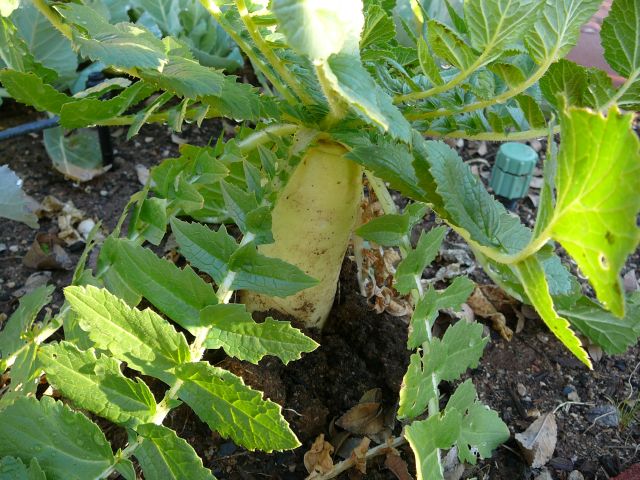
Soil conditions are important for root growth, especially for plants with long roots like carrots and Daikon radishes. If the soil is hard, roots will have trouble expanding through it. Soil should be thoroughly cultivated to a fine consistancy, with plenty of compost added, for the best results.
The photo above shows a mature Daikon radish pushing up out of the ground as it grows. It's normal for this to happen to some extent, but becomes more pronounced when the soil is hard. The part of the root that's exposed to the sun and air can become damaged and inedible if left exposed for too long.
The photo below shows what can happen when root crops run into obstacles. The top Daikon radish was growing fine in loose soil, but had the misfortune of being planted above a length of PVC pipe that runs under my garden. The root tried to grow around the pipe, but had trouble doing so.

